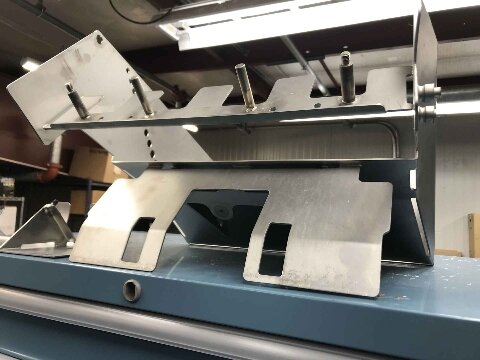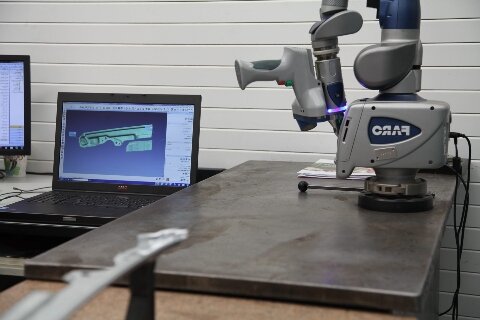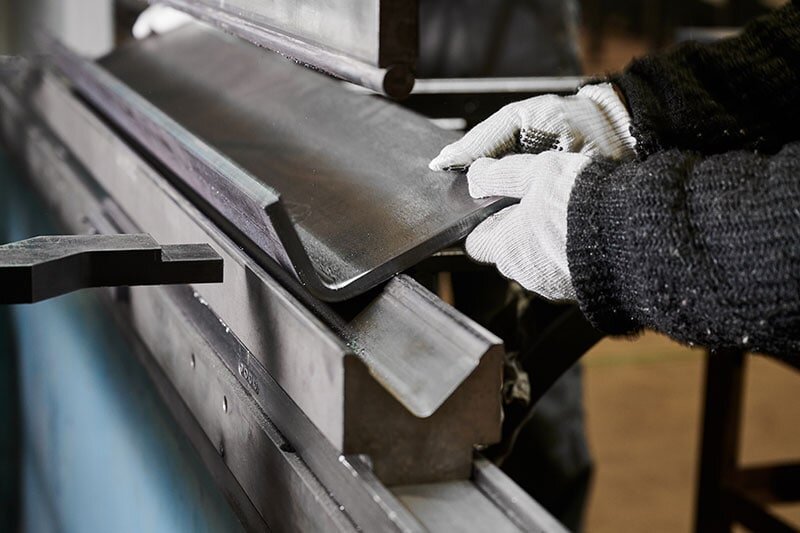La fabrication exige des matériaux qui durent. Les ingénieurs sont soumis à une pression constante pour sélectionner des métaux qui résistent à la corrosion, qui sont performants et qui ne dépassent pas le budget. L'acier inoxydable 304 répond à ces besoins en combinant robustesse et excellente résistance à la rouille. Cette qualité est la variante d'acier inoxydable la plus utilisée dans de nombreuses industries.
Vous voulez savoir ce qui distingue ce métal ? Examinons ses principales caractéristiques et ses utilisations courantes dans l'industrie manufacturière.
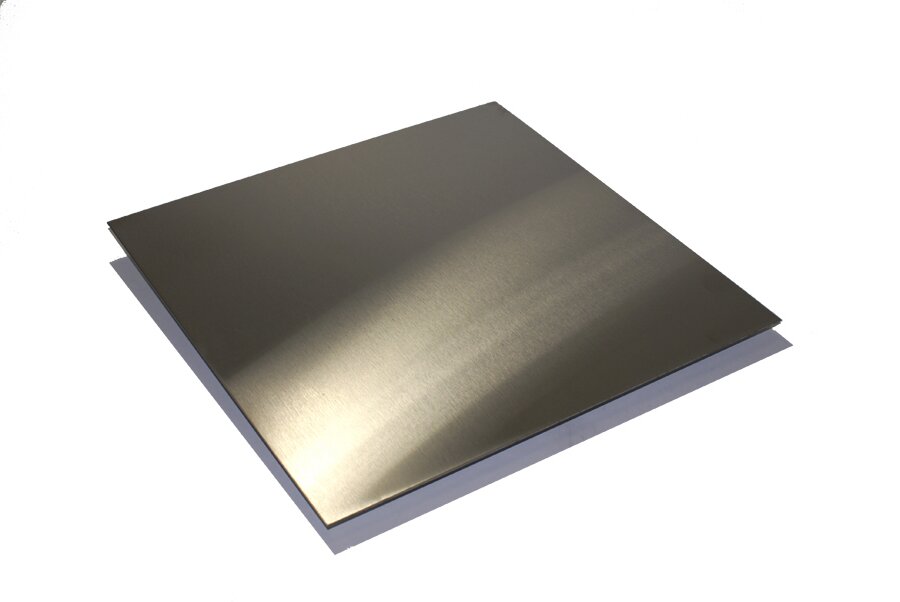
Qu'est-ce que l'acier inoxydable 304 ?
L'acier inoxydable 304 est un alliage austénitique contenant 18-20% de chrome et 8-10,5% de nickel, souvent appelé "acier 18/8". Cette composition lui confère une excellente résistance à la corrosion, une bonne aptitude à la mise en forme et une grande solidité.
Il est généralement non magnétique et peut être facilement formé ou soudé sans perdre ses propriétés. Des variantes comme 304L (bas carbone) et 304H (haut carbone) sont adaptées à des besoins particuliers tels que le soudage ou les environnements à haute température, respectivement.
Composition de l'acier inoxydable 304304
L'acier inoxydable 304 est connu pour son équilibre entre solidité, résistance à la corrosion et formabilité. Analysons sa composition chimique et le rôle des différents éléments d'alliage.
Composition chimique
L'acier inoxydable 304, également connu sous le nom d'acier inoxydable "18/8", est composé des éléments suivants en pourcentage de poids :
- Fer (Fe) : 66-74%
- Chrome (Cr) : 18-20%
- Nickel (Ni) : 8-10.5%
- Carbone (C) : 0,08% max
- Manganèse (Mn) : 2% max
- Silicium (Si) : 1% max
- Phosphore (P) : 0,045% max
- Soufre (S) : 0,03% max
Les éléments d'alliage et leur rôle
Chaque élément de l'acier inoxydable 304 apporte des propriétés spécifiques :
- Chrome (Cr) : Améliore la résistance à la corrosion en formant une couche d'oxyde passive sur la surface.
- Nickel (Ni) : Améliore la ténacité et la résistance à la corrosion, en particulier dans les environnements acides.
- Carbone (C) : Augmente la résistance mais doit être maintenu à un niveau bas pour éviter la précipitation de carbure pendant le soudage.
- Manganèse (Mn) : Renforce la ténacité et l'aptitude à l'usinage à chaud.
- Silicium (Si) : Améliore la solidité et la résistance à l'oxydation.
- Phosphore (P) et Soufre (S) : Maintenu à un niveau bas pour préserver la ductilité et éviter la fragilisation.
Variantes : 304L vs. 304H
L'acier inoxydable 304 existe en différentes qualités :
- 304L (faible teneur en carbone) : Meilleur pour le soudage ; résiste à la corrosion intergranulaire.
- 304H (Haute teneur en carbone) : Résistance accrue à haute température.
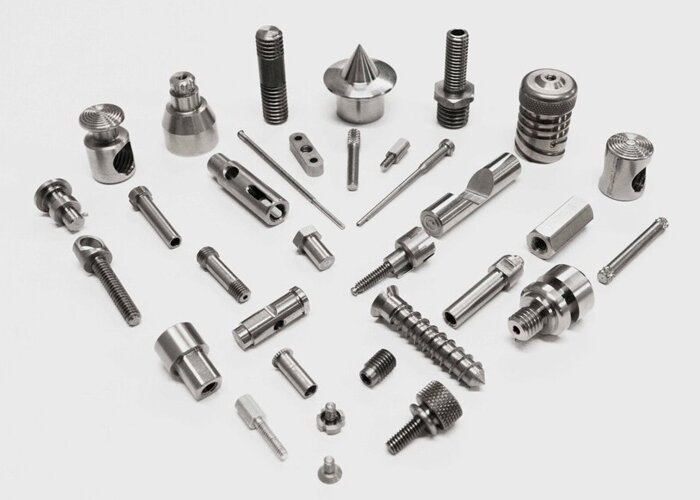
Principales propriétés de l'acier inoxydable 304
L'acier inoxydable 304 est très apprécié pour sa durabilité, sa solidité et sa résistance à divers éléments. Nous examinerons ici quelques propriétés clés qui le rendent adapté à de multiples applications.
Résistance à la corrosion
Le chrome contenu dans le 304 crée un bouclier d'oxyde transparent à la surface. Cette barrière naturelle empêche la rouille et la corrosion d'attaquer le métal en dessous. En cas de rayures, le bouclier se répare en réagissant avec l'oxygène de l'air.
Durabilité et résistance
L'acier inoxydable 304 présente une résistance remarquable à la fois dans les pièces et à haute température. Avec une résistance à la traction de 515 MPa et une limite d'élasticité de 205 MPa, il résiste aux chocs tout en conservant sa forme sous contrainte.
Résistance à la chaleur
Ce métal fonctionne bien à des températures extrêmes allant de -196°C à 800°C. Il conserve sa résistance même lorsqu'il est chauffé. Il conserve sa résistance même lorsqu'il est chauffé, refusant de se déformer ou de se plier sous l'effet de la contrainte thermique.
Nature non réactive
304 reste stable dans la plupart des environnements, refusant de rouiller ou de se corroder dans le cadre d'une utilisation normale. Le métal n'ajoute ni goût ni odeur aux aliments et aux boissons, et la plupart des produits chimiques peuvent toucher la surface sans causer de dommages.
L'attrait esthétique
Le métal confère un aspect propre et professionnel à tout projet. Sa surface prend un poli brillant qui dure des années. Le nettoyage ne nécessite que de l'eau et du savon pour éliminer la saleté.
Applications courantes de l'acier inoxydable 304
L'acier inoxydable 304 est omniprésent en raison de sa polyvalence. Voici quelques applications courantes :
Utilisations industrielles
- Équipement de traitement chimique : Résiste aux substances corrosives.
- Tuyauterie et tubes : Idéal pour le transport de liquides dans des environnements difficiles.
- Composants structurels : Utilisés dans les poutres, les cadres et les supports en raison de leur résistance.
Industrie alimentaire et des boissons
- Équipement de cuisine: Les éviers, les plans de travail et les ustensiles bénéficient de leur hygiène et de leur résistance à la corrosion.
- Machines pour la transformation des aliments : Assure la sécurité grâce à sa surface non réactive.
Applications architecturales
- Éléments décoratifs : Son attrait esthétique lui permet d'être utilisé pour les façades et les sculptures.
- Structures extérieures : Résiste aux intempéries dans les ponts et les passerelles.
Domaines médical et automobile
- Outils médicaux : Les aiguilles hypodermiques et les instruments chirurgicaux exigent précision et résistance à la corrosion.
- Pièces détachées automobiles : Utilisé dans les garnitures et les systèmes d'échappement pour leur durabilité.
Différences entre l'acier inoxydable 304 et les autres qualités d'acier inoxydable
Voici une comparaison entre l'acier inoxydable 304 et d'autres qualités d'acier courantes. Ce tableau met en évidence leurs principales différences en termes de composition, de propriétés et d'utilisations courantes.
| Propriété | Acier inoxydable 304 | Acier inoxydable 201 | Acier inoxydable 316 | Acier inoxydable 430 |
|---|---|---|---|---|
| Teneur en chrome | 18-20% | 16-18% | 16-18% | 16-18% |
| Teneur en nickel | 8-10.5% | 3.5-5.5% | 10-14% | 0-0.75% |
| Teneur en carbone | Max 0,08% | Max 0,15% | Max 0,08% | Max 0.12% |
| Résistance à la corrosion | Excellent | Moyen (moins résistant) | Excellent (grâce au molybdène) | Moyen (moins résistant à la corrosion) |
| Soudabilité | Bien | Moyen (peut être plus difficile à souder) | Bon (doit être entretenu dans des conditions marines) | Médiocre (sujet à la rouille et à la corrosion) |
| Force | Haut | Modéré (faible résistance) | Élevée (bonne pour une utilisation marine) | Modéré (plus faible que 304) |
| Résistance à la chaleur | Jusqu'à 870°C (1600°F) en utilisation courte | Jusqu'à 870°C (1600°F) | Jusqu'à 870°C (1600°F) en utilisation courte | Jusqu'à 815°C (1500°F) |
| Applications | Usage général, alimentaire, médical | Appareils de cuisine à petit prix | Marine, chimique, médicale | Automobile, appareils ménagers, zones non corrosives |
| Propriétés magnétiques | Non magnétique | Magnétique (peut être légèrement magnétique) | Non magnétique | Magnétique |
Soudage et fabrication de l'acier inoxydable 304
L'acier inoxydable 304 est largement utilisé dans le soudage et la fabrication en raison de son excellente soudabilité et formabilité. Voici un aperçu de la façon dont l'acier inoxydable 304 est soudé et fabriqué.
Soudage de l'acier inoxydable 304
L'acier inoxydable 304 est très facile à souder en raison de sa faible teneur en carbone et de sa composition d'alliage équilibrée. Toutefois, il est important d'utiliser les bonnes techniques de soudage pour éviter les problèmes de distorsion, de fissuration ou d'affaiblissement du matériau. Les méthodes de soudage couramment utilisées pour l'acier inoxydable 304 sont les suivantes :
- Soudage TIG: C'est la méthode la plus courante pour souder l'acier inoxydable 304. Elle permet d'obtenir une soudure propre et de haute qualité avec un minimum de projections. Le soudage TIG est idéal pour les sections fines et les applications de précision.
- Soudage MIG: Le soudage MIG est également utilisé pour l'acier inoxydable 304, en particulier pour les sections plus épaisses. Il est plus rapide que le soudage TIG, mais il ne permet pas d'obtenir une finition aussi nette.
- Soudage à la baguette: Le soudage à la baguette est moins courant pour l'acier inoxydable, mais il peut encore être utilisé pour certaines applications, en particulier dans des conditions extérieures ou sur le terrain. Il convient de choisir la bonne électrode pour éviter la contamination et garantir une liaison solide.
Techniques de fabrication
Une fois soudé, l'acier inoxydable 304 peut être transformé en divers produits et structures. La fabrication consiste à couper, plier et façonner le matériau dans la forme souhaitée. Les techniques de fabrication les plus courantes sont les suivantes
- Découpe au laser: La découpe au laser offre une grande précision et des bords nets. Elle est utilisée pour découper des tôles, des plaques et d'autres formes plates en acier inoxydable.
- Usinage CNC: La CNC est souvent utilisée pour des formes plus complexes ou des caractéristiques détaillées. Elle permet de créer des coupes et des formes précises et est utile pour la production en grande série.
- Formant: L'acier inoxydable 304 peut être plié et formé à l'aide de presses plieuses ou d'autres machines de formage. Il conserve sa résistance et sa capacité de formage après le pliage, ce qui le rend adapté à la fabrication de pièces telles que des supports, des panneaux et des boîtiers.
- Estampillage: L'emboutissage est utilisé pour créer des pièces de haute précision à partir de feuilles d'acier inoxydable. Il s'agit d'utiliser une matrice pour découper, façonner ou poinçonner le matériau dans des formes spécifiques.
Conclusion
L'acier inoxydable 304 est un matériau polyvalent et largement utilisé, connu pour son excellente résistance à la corrosion, sa grande solidité et sa bonne soudabilité. Il est idéal pour de nombreuses applications, notamment l'industrie alimentaire, les équipements médicaux et la fabrication générale. Sa capacité à résister à la rouille et aux températures élevées en fait un matériau adapté à diverses industries.
Si vous avez besoin de tôles en acier inoxydable 304 de haute qualité pour votre prochain projet de fabrication, nous sommes là pour vous aider. Contactez-nous dès aujourd'hui pour obtenir des conseils d'experts et des solutions de tôlerie précises adaptées à vos besoins. Prenez contact avec nous pour un devis ou plus d'informations !
Hey, je suis Kevin Lee

Au cours des dix dernières années, j'ai été immergé dans diverses formes de fabrication de tôles, partageant ici des idées intéressantes tirées de mes expériences dans divers ateliers.
Prendre contact

Kevin Lee
J'ai plus de dix ans d'expérience professionnelle dans la fabrication de tôles, avec une spécialisation dans la découpe au laser, le pliage, le soudage et les techniques de traitement de surface. En tant que directeur technique chez Shengen, je m'engage à résoudre des problèmes de fabrication complexes et à favoriser l'innovation et la qualité dans chaque projet.

